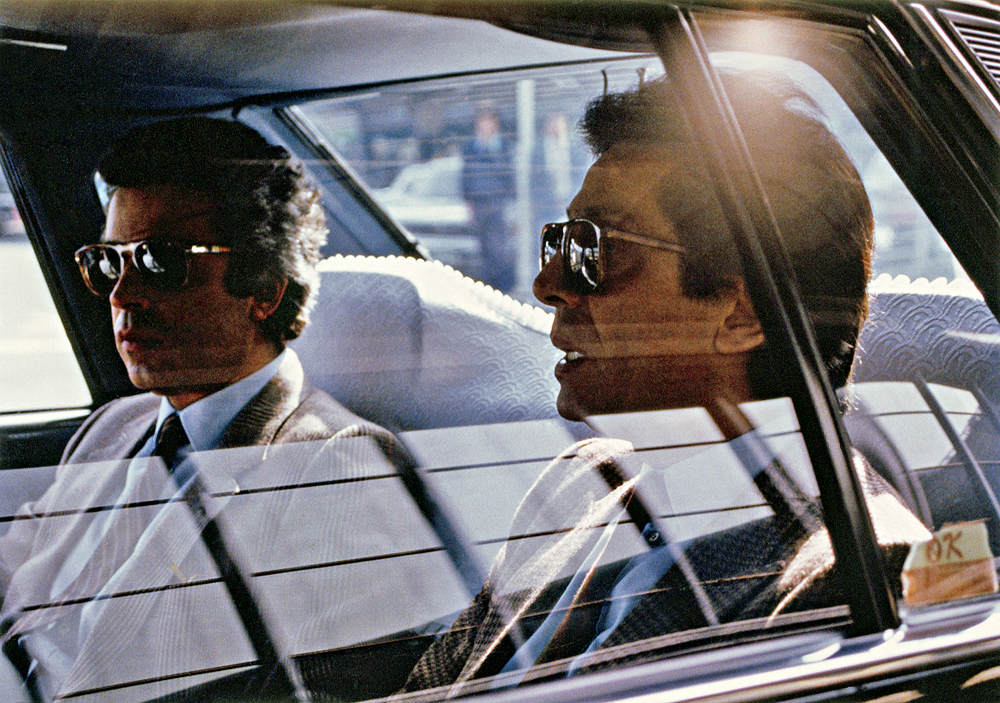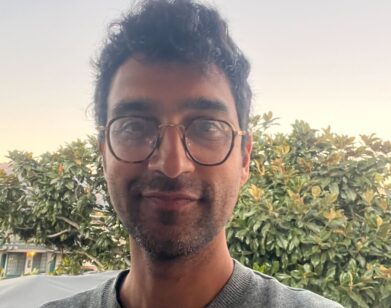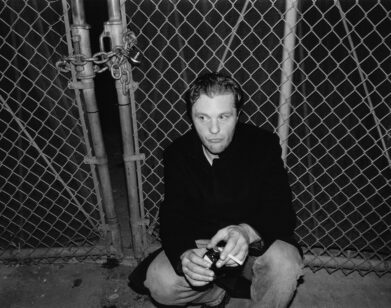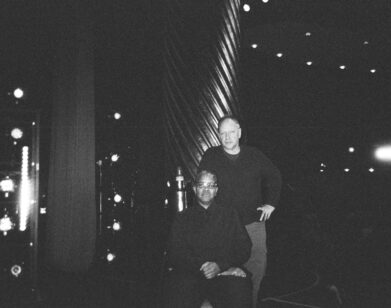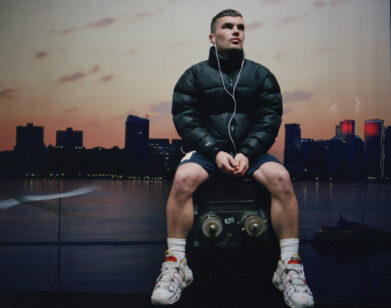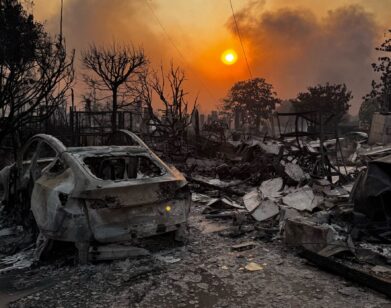Giancarlo Giammetti
I hope the book is not pretentious. It’s about my life, and I did it in order to remember Giancarlo Giammetti
Matt Tyrnauer’s 2009 documentary Valentino: The Last Emperor provided a rarified view on the life shared by designer Valentino Garavani and his partner Giancarlo Giammetti, who first met by chance encounter at a café in Rome on a now legendary summer night in 1960, and, at the time of the film, were in the difficult process of retiring and disengaging from the fashion house that they’d devoted their adult lives to building together. But while the film provided an inside look at Valentino and the process he undertook to create his final collections, it also introduced many outside the fashion world for the first time to Giammetti, who, of the pair, has always been the true empire-builder, taking prescient and innovative steps like branching out into ready-to-wear and licensing at moments when few European houses were willing to make such bold moves—and, just as importantly, providing support and protection for Valentino, his interests, and his vision. Valentino and Giammetti sold their company in 1998 for a reported $300 million but remained at its helm until January 2008, when Valentino presented his final collection. Since then, they’ve remained busy, amongst other endeavors, creating the Valentino Garavani Virtual Museum, which provides digital access to designs and imagery from Valentino’s archive, and organizing an exhibition of haute couture pieces that appeared at Somerset House in London from last November through early this spring—both initiatives led by Giammetti.
Valentino, the brand, though, has always transcended fashion, coming to embody a lifestyle that both Valentino, the man, and Giammetti, have enjoyed over the years—one that is as particular to the men themselves as it is innately glamorous, filled with famous friends, far-flung trips, and lots of time spent sunning, relaxing, and celebrating on yachts.
Giammetti’s new photo-book memoir, Private (Assouline), collects images and remembrances of that life. Burrowing into Giammetti’s early days and upbringing in Rome as Italy became further and further ensnared in the Second World War, the book explores how his world changed once he met Valentino and the incredible journeys they would proceed to embark on—both in fashion and outside of it, both together and apart. Of course, as anyone in their ever-growing circle of friends and extended family will tell you, nobody throws a party quite like Valentino and Giammetti—mostly because nobody lives quite like Valentino and Giammetti—and Private does not give short shrift to their predilection for rejoicing in arms with their nearest and dearest, such as Princess Grace, Jacqueline Kennedy Onassis, Elizabeth Taylor, Madonna, Gwyneth Paltrow, Diane von Furstenberg, Jack Nicholson, Jerry Hall, Diana Vreeland, and Andy Warhol.
Actress Anne Hathaway got to know Valentino and Giammetti after Valentino made an appearance in her 2006 film The Devil Wears Prada, and she has remained close with the men every since. (Valentino even designed her dress for her 2012 nuptials to Adam Shulman.) She recently caught up with Giammetti, who was in New York, by phone from Los Angeles to discuss his decision to do a book now, and the very personal story that Private tells.
ANNE HATHAWAY: I got my copy of the book yesterday. I was really so moved that you thought to mention me in it, and I loved that you included the photo of the fitting for my wedding dress.
GIANCARLO GIAMMETTI: Well, you’re part of our life.
HATHAWAY: Thank you. But I really liked the format of the book. It’s so much like the photo albums and the scrapbooks that I’ve seen you put together of pictures you’ve taken on vacations and in your life. When we first met, I was understandably intimidated, but you and Valentino put me at ease because you’re such great fun. I think that the photos in this book really reflect that ability that you and Vava have to make people feel comfortable—it’s a real treat to see so many familiar faces relaxed and unguarded and happy in your photos.
GIAMMETTI: I didn’t choose the pictures because people were relaxed or smiling, but definitely, if it was an image of me and Valentino, then we were happy and felt relaxed and at ease because we were surrounded by all of those people. This book is, in a certain way, a continuation of the movie, Valentino: The Last Emperor, which was about opening up our lives and our memories, and telling people who we are. I am very glad to do this because people who don’t know us might have different feelings about us or, as you say, be intimidated because Valentino is a big designer. I hope the book is not pretentious. It is not a book of an artist. It’s about my life, and I did it in order to remember, because I’ve had such a special life filled with so many amazing moments and amazing people. So I wanted to show this in a way that makes it more … How do you say? More possible to touch …
HATHAWAY: More approachable?
GIAMMETTI: Yeah.
HATHAWAY: I think that’s the essence of who you guys are. Your life is grand by anyone’s standards, but you are both very down-to-earth people. You’re all about family and friends and loyalty, and you’re unfathomably generous. But looking at all these pictures, the first question I wanted to ask you is this: How tan is too tan? Or, is it possible to be too tan?
GIAMMETTI: We are too tan. [both laugh] There is a picture in the book of me in the early days dancing, and I was so, so tan. But since the beginning, I’ve always liked to have the sun on my body. Now, though, I try to be a bit more careful because you’d have to be really stupid not to listen to the doctors. On our vacation this year, I put the protection—I put an SPF 30, and on some spots, I put an SPF 50. But I don’t know. My body reacted the same way—I was still tan, like as if I didn’t put any protection.
HATHAWAY: Well, I have no melanin in my skin, so I think you have a gift. [both laugh]
GIAMMETTI: Valentino and I have been lucky in many ways. We were very lucky because we didn’t become super famous—especially as a company—in one shot. Our life has been more one of steps, one after the other, and when that happens, I think you learn to have different tastes and to be better as a person. But we never had the shock of sudden fame, where you become famous in one day because you are a young designer and everybody is talking about you, like what happens today, where the media is so eager to have new blood. We have so many people failing after that initial shock of fame today because they’re having too much too early in styledom. But that didn’t happen to us. Yes, Valentino, with the “White Collection,” became very important. But it was a slower process. That’s maybe why at my age I am able to do a book like this or to be in a movie like The Last Emperor—because we are prepared to do those things today, but maybe we were not before.
HATHAWAY: Failure is such an important part of development. But nowadays, we don’t have a lot of patience for it.
GIAMMETTI: Failure is actually very helpful in a lot of ways. I’ve been lucky enough not to feel too many real failures because, next to me, I had the most solid-as-rock person in Valentino. He never accepted failure—even when we were in the process of giving up our fashion house and our collections, which were moments that were maybe not the best for us. But Valentino made me convinced that everything was working well. He can be very convincing. I believe everything he says—always. Even my failures in my personal life, in a love affair and things like this, I was always compensated by this amazing relationship I had with Valentino. So I’m not very good at judging failure.
I’ve never been somebody looking for the spotlight. Even from the beginning, I knew that it was not my position. Giancarlo Giammetti
HATHAWAY: I thought one of the best lines in the book—one that resonated with me most—was when you wrote that you dedicated yourself to letting Valentino be Valentino, to letting him be free and clearing the world for him and protecting him as an artist.
GIAMMETTI: It was something that came naturally. I start out with him so early in my life—I was 22—so I was not very able to think about my own personality. All of my interests, all my efforts, all my passion was about Valentino, so it became almost normal that I did everything possible to help him. And then when I started to discover his limitations—that he was not interested in the marketing, he was not interested in the advertising—I took over, because the company was growing and somebody had to do it. So little by little, he felt free to just do what he wanted and I was the rest. But it was not a big effort—it was not something that I regret. I’ve never been somebody looking for the spotlight. Even from the beginning, I knew that it was not my position: firstly, because it was normal that the artist who designed clothes would become the famous person; secondly, because the company was named after him; and thirdly, because Valentino definitely has much more star quality than I do.
HATHAWAY: I don’t know. You’re both pretty sparkly. [laughs]
GIAMMETTI: The spotlight was not for me—I was not interested. I was just working to try to make everything good in my own possibilities, although I made some things that are not to be proud of.
HATHAWAY: Are you referring to the Valentino toilet seat that was made in the 1980s?
GIAMMETTI: Oh! [laughs] I mean, I did have failures in my own job. In the book, I talk about a big disappointment I had from somebody who was very important in the company. It was not a friend, but somebody who really had a high position, and he did something really quite amazing … I cannot say it in the book or discuss this because we had to go to court—but for me, this was a big failure. After the shock of that happening, I decided that I would take care of every detail, so I took the old position that this guy had and made it mine, and I can tell you that from that moment, the company grew from one to probably ten just because it was revenge. It was my pride going crazy.
HATHAWAY: And, of course, no one is going to protect the company or Valentino better than you. I loved seeing the photos of you and Vava from around when you first met, when you were 22 and he was 28. I was just trying to imagine what the two of you would’ve been like then and how hungry that you must have been to build what you built together.
GIAMMETTI: Well, from the pictures, you can see that we had a certain ingenuity—and naïveté—in building the company. Don’t forget that I didn’t come from fashion. Valentino came from fashion and had been in Paris, but with his character, he was not really a manager, so we created this and tried to learn here and there with a lot of courage, but also ambition—and, as I said, we were a bit naive. We were smiling a lot. We were cute. People had fun in having us around and helped us. Mrs. Vreeland famously adored us—until she died, she was still calling us “the boys.” So in the beginning, it was very natural and fun to discover everything and to try to do all the things that were not there before. We wanted to do something different, to bring a new speed. I think that this was one of the keys of our success.
HATHAWAY: You’ve said that until recently, it never would have occurred to you to share these photos with the world or to share this part of your life. I was wondering: what changed?
GIAMMETTI: It was maybe more technical than romantic, because I’d started to worry if I had enough pictures. I eventually discovered that I had 57,000 pictures, and so we went into the archives and made a very precise organization of it all, so today, if you want to know exactly when a picture was taken, who is in it, and have it in high-definition, it can be done. Also, with the birth of Facebook and Instagram, you see that you can put up a picture and people react, and I discovered that some of the pictures that are put up had a great impact on people because suddenly they’re brought back to a certain period or a certain moment. When you put up a picture of Bianca Jagger, for example, it was like, “Oh my god!” So somebody suggested to me, “Why not do a book?” And the success of the movie, again, was also a good incentive to open my personal life, because in the movie, in a certain way, it was the first time that the general public discovered that I existed—that I was there. So it was a bit of a combination of being ready for it technically, but then also being ready because the world was ready to get it.
HATHAWAY: At the same time, it can be scary to reveal aspects of your personal life. I know that I have a very conservative approach in terms of what I choose to reveal. Did you find it difficult? Were you worried at all about giving people this window into your life?
GIAMMETTI: Well, the difference is that you are young and you have to protect your future. That is not the case for me—I just have to tell my past. But I don’t know … Now, you scare me.
HATHAWAY: [both laugh] No, I’m thrilled that you’re sharing your life in this way—my life isn’t as interesting as yours. But was there anything that was totally off limits to people now that you’ve kind of moved the line for your privacy? I mean, the book is called Private, but it’s a look at your personal life. Where do you draw the line now?
GIAMMETTI: Well, I had to protect some people, so there are people who don’t appear because I think that I should protect them for one reason or another. And maybe I could talk more and show less, and tell more stories—because there were so many—or tell more opinions, which I don’t give much in the book, about the world of fashion today and things like this. But I have not much more to say than what I say in the book, you know?
HATHAWAY: That’s interesting because you and Vava built your empire at what I think was probably the greatest and most glamorous moment in fashion in the ’60s. How do you feel like fashion and glamour have evolved since then?
GIAMMETTI: It’s clear that in the ’60s and the ’70s, the big glamour was more European. I think that the idea of glamour was a woman in Paris called Marie-Hélène de Rothschild, whose parties and balls were famous and everybody would go. Then there was another group in America that was the group of Andy Warhol and Halston and the Liza [Minnelli], which was completely day and night with what was going on in Europe. We always loved to move from our chateau to the Studio 54. They were still separate worlds, but then, little by little, the two would start to become closer, so the ladies from one world went into the Studio 54, and the people of the Studio 54 came to the chateau. That’s the difference now: before, there were these two, different, great worlds, with the cool, and a bit of the drug, on one side, and the traditional, masterful, and terribly glamorous and rich on the other. But now, different worlds mingle more.
HATHAWAY: So you feel like nowadays fashion represents a greater mingling?
GIAMMETTI: Very much so. I guess today the glamour comes from different things. The glamour today comes from people on the red carpet, from the TV, from the … What do you call it?
HATHAWAY: Reality TV?
GIAMMETTI: Reality TV. So where the world was once about Jackie Kennedy, today we’re at Kim Kardashian. It’s there and you have to accept it. Instagram also makes the culture of a community. It’s not anymore a culture of things that you learn about for months or for years. It’s a three-minute culture, and there’s so much information that you have to concentrate on in one picture, in one line, in one tweet … That’s the glamorous now.
HATHAWAY: I loved seeing photos from your childhood in the book. You say in the book that your life began when you met Valentino, but it was great to get a glimpse of who you were for your first 22 years. You were a child during World War II. Do you feel like your memories of being in Italy during World War II had an impact on the rest of your life?
GIAMMETTI: No. I was too young. I do have memories, as I say in the book, of a bombing, of the alarm, and of us all running down the stairs to something called the refuge, where you would feel safe because it was below the ground. I remember those things. My father was once shot at.
HATHAWAY: There’s that story in the book about how your father was in a car with someone who got shot. I was so upset by that.
GIAMMETTI: That was war, you know? But I was young and couldn’t begin to understand all that. I have to say that I was lucky to be very young. I think my brother and my sister would have a different opinion, but I never felt that terrible moment that Italy would touch my future.
HATHAWAY: How do you think you changed when you met Valentino? Did meeting him teach you new things about yourself?
GIAMMETTI: Well, I was a very spoiled kid—very Italian, very Roman. In fact, my life was about trying to not study, trying to not go to university …
HATHAWAY: You were a rascal.
GIAMMETTI: Yeah, but in a funny way, you know? Sitting in the café waiting for the time when the nightclub opens and going dancing until the early morning. My first car, a Fiat 500, was given to me by my father—it was that kind of life, which was very bourgeois in Italy at the time … I mean, how bourgeois is bourgeois in Italy today? [laughs] Maybe a lot of people still do have that kind of life. But then there was that meeting in the café with Valentino, and suddenly I was projected in the dreams of a young kid who came from a different background than me, whose parents were so courageous to send him from a little city in the north of Italy to Paris. To all of us, Paris was the city of sin. I remember the first time I discovered that there were drag queens in Paris. You would see it in the papers. There was one super-famous one in Paris who looked like Marilyn Monroe. I just went, “Oh my god! This is in Paris?” So I told my father I wanted to go to Paris, and he said, “Okay, if you do your exams, you can go on vacation.” This was before Valentino. So I did my exams but, unfortunately, my grandfather—my mother’s father—died, and I was never able to go. So when I met Valentino, I still hadn’t been there, but he would tell me about it—about fashion, about the nightclubs, about the Café de Flore. A few months later, we went to Paris. So all my life changed after we met. Was I awakening? Yes, maybe I was. I was not sleeping before, but it was really more about finding a different life.
HATHAWAY: You mention in the book that there are some things that, amazingly, Valentino didn’t know about you before he read it. What are they?
GIAMMETTI: I can tell you one: He didn’t know before reading the book that I had gone to see Luchino Visconti to try to work with him. I mean, I was a normal kid, but I always had something in my mind that said, “You should get out of here. You should get out of this kind of life.” Visconti was not just an amazing director, he had the most glamorous life that you would see all the time in the papers. I said, “Why can I not meet him?” So one day I wrote him a letter that said, “I am 20 and I would like to work with you as an assistant.” He then invited me to his house, which was not far from mine. I remember I was very nervous and rang the door, but the butler answer and told me, “Oh, no. Mr. Visconti is sorry, but he had to leave.” I was so disappointed. I don’t know why this is one of the memories that I put in the book, or why in the moment, I thought it’d be nice to write this, but Valentino never knew about that. I never told him, but not because I was ashamed. It was just that it was removed from my memory and came back later on, maybe. Ultimately, though, I met Visconti and we were friends with him because we were very good friends with his boyfriend, Helmut Berger [Austrian actor who appeared in Visconti’s films]. Visconti trusted Valentino and I to be good for Helmut because Helmut was completely out of control—I think he thought that seeing the way that our relationship was, so steady between Valentino and me, could help Helmut. So Visconti was happy that we would go out a lot with him. I ended up seeing Luchino a lot. I was there to tell him, “You remember that little rat who came to your door? It was me.”
HATHAWAY: Something else you mention in the book is that when you first got a camera, it was sort of a luxury item and not everyone had them. Obviously, the world is so different today, where pretty much everybody who has a phone has a camera. But what was it that first drew you to photography? Why did you start taking photos?
GIAMMETTI: Well, it’s not just that the camera was such an inaccessible luxury thing—they were just, as you said, less common. I bought one, though, because I wanted to start documenting the things that I was seeing and noticing around me. There was also this kind of easy communication that you had with the Polaroid. When I say that I miss the Polaroid, it’s because it was really amazing how it was such a subject of easy conversation. It was not just an artist’s thing—anybody could have fun taking pictures. You could scratch the Polaroid with your key while it was developing, and it would come up with the drawings and color. It was actually because of Andy [Warhol] that I got my first Polaroid. I also started to write a diary—some of the pages from it are in the book. But documenting things in these ways became part of my daily life. It was just to remember.
HATHAWAY: Well, I’m very happy that Andy Warhol introduced you to the Polaroid.
GIAMMETTI: The Polaroid was a bit like what Instagram is now. If it’s not just an act of vanity, it can be a way of exchanging information and having a conversation with images. It feels like it can become very commercial as well. But it’s amazing how people are using all of the new media to talk to each other and even promote revolution. Of course, the Polaroid didn’t have that power—it was just between friends.
HATHAWAY: Do you consider yourself nostalgic?
GIAMMETTI: When you do a book that spans 50 years of your life, of course, nostalgia can be there. But neither me nor Valentino are particularly nostalgic. I mean, when I look at the pictures of my house in Tuscany and I remember a time with my family there and my mother, and all this kind of stuff, it’s nice to think about. But I’m a bit afraid of nostalgia. I don’t usually have time to look back.
HATHAWAY: So, has putting the book together been a great excuse to look back on your life and indulge in that feeling that you don’t normally allow yourself?
GIAMMETTI: Yeah. I had those albums and diaries for years, but I never looked at them. I had to do it for the book, though, and then I was looking mostly just to tell my story. I was not looking to feel, “Oh, how great those times were, how happy I was.” I’m maybe not romantic enough …
HATHAWAY: You can’t fool me. I know how secretly romantic you are.
GIAMMETTI: Sometimes I think that I should be crying when I see a picture, but I don’t have any tears in my eyes. When I see all the people laughing and having fun who are not here anymore, my nostalgia for them is there, of course—I miss them. But nostalgia is something that I don’t think is very healthy.
HATHAWAY: We were with you guys in Gstaad [Switzerland] over New Year’s Eve, and I found a photo of Vava fitting a dress on an actress from the 1960s. He then told me the whole story—he remembered everything about the dress. Then, when I showed the photo to you, you got a very tender expression on your face and said, “That’s the day we met.” I’m just so moved by you guys. I know that your romantic relationship ended a while ago, but you’re the most important person in his life, he’s the most important person in yours. So I was wondering: What do you think the secret is to an enduring relationship?
GIAMMETTI: There are so many ingredients. I am definitely more romantic than Valentino. When I look at something, at a picture, it’s about what the picture gives to me. Valentino looks at a picture and … That’s it. There’s always one who gives more, and there’s one who gives less. I think I give more for our relationship because I’m more dedicated, but in the meantime, I get so much strength from him, so he gives me something else that he probably doesn’t know he gives me. When I was discussing before about failure, about courage … You know, Valentino really gives you the sensation that you can do things, that everything will go well—and this is also very important in our relationship. But with this kind of support, it is also a little challenging—you know, “You are the best designer. I want to be the best businessman.” He did this great thing, and I wanted to do it, too, and that was always part of the challenge between us, which can be very healthy when it doesn’t become competition. And then there’s also the fact that you accept other people with new interests into your world, and that’s where the tribe starts, where the family starts.
HATHAWAY: And I love how big and beautiful and extended the tribe is.
GIAMMETTI: You know, I hate to forget people. I hate that people are very close to you for a while and then suddenly you ask, “What happened to him or to her? Are they still alive? Where are they?” I mean, I have been living with this person for two years, three years—we share a bedroom. We share everything. We are traveling … And then suddenly, they disappear from your life and they haven’t done a thing so horrible to you. So for me, it’s more about, “Let’s keep the family growing.” Let’s accept the boyfriend or the girlfriend or the new wife of your best friend, you know? That’s the tribe.
HATHAWAY: You and Vava technically retired five years ago, but I’ve noticed that you’ve managed to accomplish more in your retirement than most people accomplish in their careers. You set up the virtual museum, you’re publishing a book—you’ve done all kinds of things. What’s next? What are you scheming and dreaming about now?
GIAMMETTI: I don’t know. Our life has been so amazing. We have such a schedule that suddenly you cannot believe that you just stop and sit next to a little lake and throw some bread to the fishes or read the paper. We were active people. We were going to work every day the same way—a routine. Working in fashion is not like being an actor, where you can work very hard for three months and then maybe for six months you don’t want to do anything. In fashion, you have a schedule. You know that in exactly six months you have to present a new collection, and that the collection has to be of so many pieces, and in Paris, we will be there to show it. In a certain way, it’s also boring. But then you suddenly find yourself 100 percent free to do whatever you want, and in the meantime, your DNA, your body says, “I want to do something. I don’t want to sit and watch television.” So I had to invent things. First, there was the virtual museum, which was not an invention to spend time, but something that I thought would be interesting and unique—it’s still the only digital fashion museum of its kind in the world. Then Valentino also designed for a ballet. I did the book. So I don’t know what is next, but definitely there will be more things. I don’t want Valentino to be sitting in front of a TV—I don’t want to be sitting in front of TV. We have to go on. I refuse to think about retirement as stopping activity.
HATHAWAY: So can I please have a Valentino toilet seat for my birthday?
GIAMMETTI: You want the toilet seat?
HATHAWAY: Do they still exist? And if so, can I please have one?
GIAMMETTI: Have you checked on the Internet?
HATHAWAY: I haven’t checked. I wanted to go straight to the source.
GIAMMETTI: Oh my god—they were too fluffy for you. They were done in the worst material.
HATHAWAY: They were fluffy? I imagined them being more plastic.
GIAMMETTI: No, no. They were fake fur with long hair. Fake fur in the blue, in the pink …
HATHAWAY: That doesn’t sound hygienic—you’d have to have great aim.
GIAMMETTI: I will find one. Or I will ask Valentino to make one for you.
HATHAWAY: Thank you so much. I will be eternally grateful.
ANNE HATHAWAY IS AN ACADEMY AWARD–WINNING ACTRESS.HER UPCOMING FILMS INCLUDE SONG ONE AND CHRISTOPHER NOLAN’S INTERSTELLAR.

